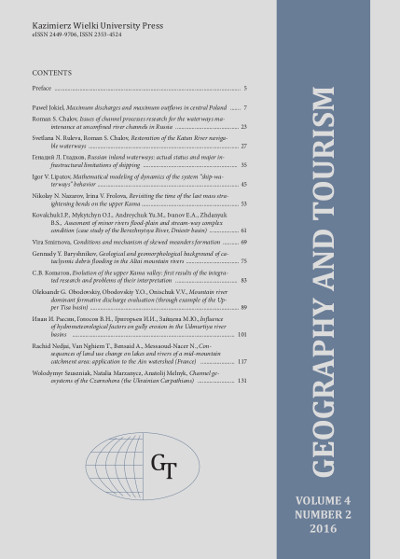Consequences of land use change on lakes and rivers of a mid- mountain catchment area: application to the Ain watershed (France)
Keywords:
Soil occupancy, Modelling, Ain river, organic matter, geochemistry, lakesAbstract
The Ain river – tributary of the Rhone, is distinguished by a geological and geomorphological duality splitting it into two very clear parts: the mountainous (karstic-jura mountains) and the low alluvial valley of the Ain river, characterized by agricultural land use. The geographical boundary between the two zones is the dam of Vouglans (3rd water reserve of France). These geological differences give rise to two types of reserves: karstic reserves at the top of the watershed and an alluvial water table enclosed in the quaternary alluvium at the bottom. The last thirty years have been marked by the massive exodus of the rural populations of the Haut, which maintained a pastoral activity for the valleys holding most of the industries. A renewal of pastoral areas by mainly coniferous and deciduous forests, particularly in the upper part of the catchment area (Jura), reflects this phenomenon of exodus. This process was accompanied by an increase in the input of organic matter and marked deoxygenation of the deep (hypolimnion) levels of the water bodies, mostly located at the top. This physico-chemical manifestation is felt at the bottom in rivers and more particularly in the river Ain, one of the main tributaries of the Rhone. The management of water resources has been subjected to this geological and economic duality, giving rise to a SWMM (Scheme for Water Management and Management) based on the alluvial plain in the lower part of the watershed and the installation of numerous contracts of rivers on the affluent of the Ain in addition to the SWMM. One of the priority concerns of managers is the assessment of the extent of deoxygenation recorded in the plans to the rivers and especially its consequences on the lower rivers. The results of measurements and models applied show that the phenomenon is not very noticeable upstream and downstream of the Vouglans dam. Predictive simulations incorporating the GIEC recommendations (optimistic and pessimistic scenario) do not show a particular trend for 2050.

